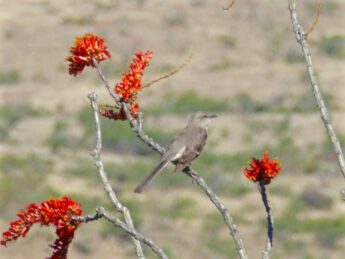CONSERVATION PRACTICES AT RAVEN’S NEST
Removal of Invasive / Non-Native Species

At Ravens-Way Wild Journeys LLC we are committed to eradicate invasive/non-native plant species that threaten the biodiversity of our two Nature Sanctuaries – Raven’s Nest & Raven’s Mountain – and of our the Sky Islands as a whole. Because these plant species are no longer within the biological constraints of their original habitats, they become invasive and tend to thrive at the expense of the native plants and wildlife.

Since our arrival at Raven’s Nest Nature Sanctuary in March 2008, we’ve implemented an aggressive hands – on removal strategy of the non-native grasses that threaten the Sky Islands, such as Lehman’s Lovegrass, Bermuda Grass, and Natal grass – all originally from southern Africa.

In accordance with our ongoing Environmental Policy we reuse many of those non-native dried grasses as cover for our stone-age shelters, as well as for mulching around our native plantings, organic orchards and edible organic gardens. Additionally, throughout our Nature Preserves we are aggressively removing Tumbleweed which came from the steppes of Asia and London Rocket originally from Eurasia. Left unchecked, these non-native plants can quickly become invasive and take over the landscape, crowding out native plants and wildlife, while decreasing the overall biodiversity. Persistence is the key when it comes to wiping out non-native plants. Repeated pulling of the offending plants in the same area is required in multiple years until once again the native flora recolonizes the site.

Having enacted our aggressive non-native plant removal policy since our joyful arrival to Raven’s Nest Nature Sanctuary in 2008, we’ve witnessed a remarkable increase in the biodiversity of native plants at the preserve over the following years.

This in turn has fostered a greater diversity of wildlife – a positive ecological cascade. We’ve accomplished all of this in the most organic and Earth-friendly way, using only our hands and hand tools.




At no point have we used nor are we planning to use any chemicals, pesticides, or motor-driven tools to accomplish what is best done naturally. The natural process and hands-on experience of rehabilitating the land is just as important to us as the end result!
